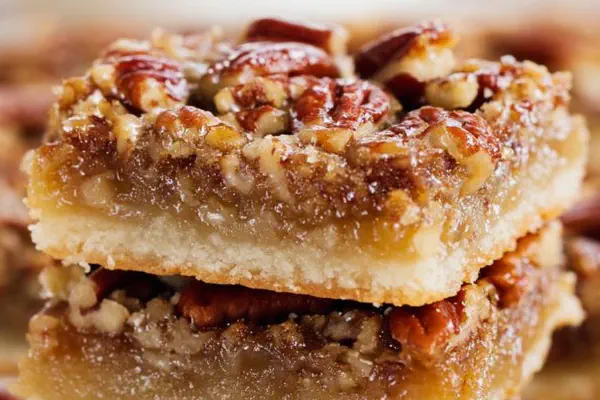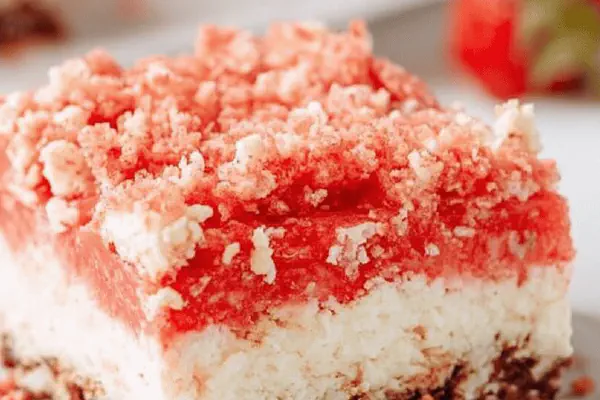Pineapple Tornado Cake

By Emma
Certified Culinary Professional
Ingredients
- 1 box yellow cake mix
- 3 large eggs
- ½ cup vegetable oil
- 1 cup evaporated milk, divided
- 1 cup crushed pineapple with juice (substitute canned mandarin oranges for twist)
- 1 tablespoon butter (for greasing)
- 3 large egg yolks
- ¾ cup granulated sugar
- 3 tablespoons butter
- 1 teaspoon vanilla extract
- ½ cup chopped pecans (toasted optional)
- ½ cup sweetened shredded coconut flakes
About the ingredients
Method
Cake
- Oven at 350 degrees Fahrenheit, grease 9x13 pan thoroughly with butter, set aside. Greasing crucial; stickiness kills cake vibes.
- In a large bowl, whisk cake mix, eggs, oil, and ¾ cup evaporated milk on medium speed. About 2 minutes till batter smooth, light but not overbeaten — air is friend here. Don't rush mixing the crushed pineapple next, juice and all. Stir in until just combined; overmixing ruins texture, makes cake tough.
- Pour batter evenly in the pan. Bake 38-42 minutes. Toothpick test mandatory. Cake edges pull back slightly, top bounces back and golden but not dry. Oven quirks matter; watch the cake, not just clock.
Topping
- Heat medium saucepan, whisk egg yolks and remaining ¼ cup evaporated milk vigorously—no lumps. Add sugar, butter, vanilla. Melt butter fully before mixture bubbles.
- Once boils, reduce heat to simmer and stir constantly. Five, maybe six minutes until thickened, a golden deep amber, coat back of spoon shiny layer. Patience essential here—burnt sugar smells doom and bitterness. Add pecans and coconut off heat; mix to keep texture.
- Right out of oven, poke cake top evenly with a wooden spoon handle. Don’t stab too deep — aim just to pierce crust, let topping soak bottom layers.
- Spread topping gently but thoroughly. Warm cake absorbs it better, sticky promises of texture. Cool at least 20 minutes before slicing. Cool too fast in fridge, topping seizes, lose gooey magic.
- Enjoy with strong coffee or late night fix. Cake reheats okay but topping texture softens; consume fresh for crunch contrast.
Cooking tips
Chef's notes
- 💡 Use medium mixer speed to keep batter light; high speed leads to gluey mess. Fold crushed pineapple gently by hand to keep air in. Air means less dense cake. Overmix pineapple juice with batter ruins crumb. Watch cake edges pull from pan; subtle but telling doneness sign.
- 💡 Butter greasing outperforms sprays. Butter fully coats, prevents sticking better. Spray leaves gaps, edges stick, frustrating. Toast pecans dry in skillet but quick check, no burn. Nut aroma tells readiness. Coconut flakes fresh or lightly toasted, avoid bitter – dry shredded often harsh.
- 💡 Poke cake with wooden spoon handle, not fork. Fork holes too big, topping seeps too fast, soggy cake center. Poking shallow covers surface, topping sinks nicely. Spread topping warm, cake still warm, topping soaks in better. If topping sets too fast, rewarm pan gently to spread again.
- 💡 Watch topping thickening phase like hawk. Swirling spoon back sticky but runs slow; no instant coat. Boil then simmer, stir constant. Burnt sugar smell instant fail, discard if smells off. Add nuts/coconut off heat to keep crunch, heat kills texture. Patience critical; topping glossy amber clues here.
- 💡 Bake in glass pan if possible. Holds heat steady, edges pull nicely, not too fast. Metal pans throw off timing. Tap cake near finish for hollow sound, adds timing cue beyond minute count. Cooling rack needed for avoiding soggy bottom, spacing helps air flow under pan, topping sets right this way.
Common questions
Can I swap pineapple with other fruit?
Yes, mandarin oranges canned work well, sweeter less tang. Fresh fruits vary juice amount, texture changes, so poke and bake times adjust. Don’t mix early in mixer, fold by hand to avoid dense batter.
Butter vs oil in topping?
Butter mandatory unsalted or reduce sugar for sweet balance. Oil can’t mimic topping gloss or texture. Butter melts slowly, carries flavor. If no butter, topping texture suffers, less glossy, less nutty clarity.
Cake sinking or soggy after baking?
Common error, too much mixing or poke holes too deep, topping floods cake center. Grease pan fully. Bake till edges pull slightly. Toothpick test key. Poke surface shallow, let topping seep tight layer, not flood cake.
How to store leftovers?
Room temp wrapped up to day. Fridge cools topping fast, makes it seize, tough texture. Wrap cake air tight, reheat gently in microwave or oven for better softness. Topping softens after day, crunch fades but cake base keeps moist.



